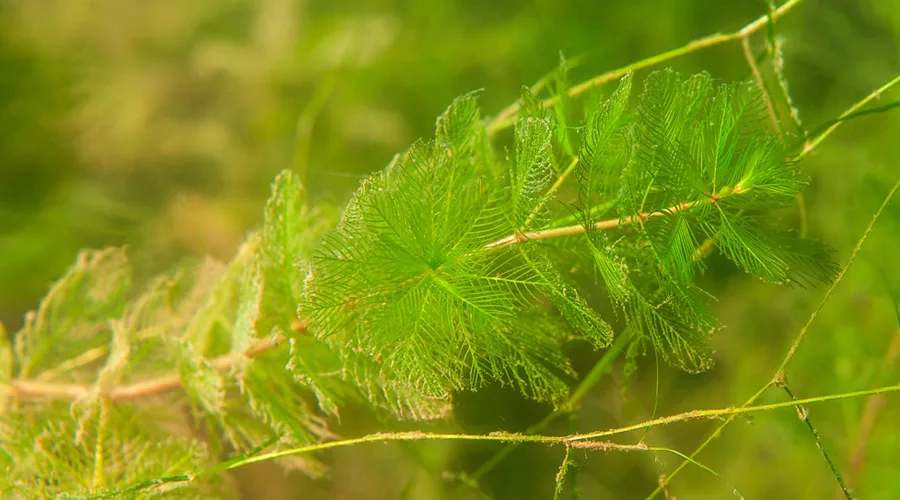Invasive Aquatic Vegetation Management Rebate

LCRA is offering rebates to assist counties, municipalities, homeowners associations and property owners associations in managing invasive aquatic plants such as Eurasian watermilfoil, hydrilla and water hyacinth on Inks Lake, Lake LBJ and Lake Marble Falls in the spring and summer of 2025. Individual property owners are not eligible for rebates. The rebates are for up to 50% of the cost of invasive plant removal or treatment, up to $7,500 per applicant. To qualify for a rebate, chemical (herbicide) treatment must occur during the designated treatment zone schedule based on the property location, and physical (manual and/or mechanical removal) must occur between March 10 and Aug. 31, 2025.
Invasive aquatic plant management plans
All management plans, including both chemical and physical methods, must be approved by the Texas Parks and Wildlife Department (TPWD) and LCRA before removal or treatment begins. Here is information on how to submit a treatment proposal form for invasive aquatic plant management.
Rebate eligibilityIf an herbicide is used:
- It must be applied by a licensed aquatic herbicide applicator. See Texas A&M AgriLife Extension’s list of certified professionals.
- It must be applied in accordance with all product label instructions and restrictions.
- It may only include the following active ingredients: Bispyribac; Copper; Diquat; Endothall; Fluridone; Flumioxazin; Imazamox; or Florpyrauxifen-benzyl: 2-pyridinecarbolic acid, 4-amino-3-chloro-6-(4-chloro-2-fluoro-3-methoxy-phenyl)-5-fluoro-, phenyl methyl ester.
- The applicator and/or the association/municipality must follow the zone schedule for the treatment location.
- The applicator and/or the association/municipality must provide notice to all public water intakes within 2 river miles of the treatment site and all individuals on the Texas Parks and Wildlife Herbicide Use Notification List at least 14 days prior to the treatment date. Notice also must be provided to TPWD at [email protected] and to LCRA at [email protected].
If mechanical or manual removal is used:
- Counties, municipalities and homeowners/property owners associations that contract with businesses for manual or mechanical removal of invasive aquatic vegetation are eligible for rebates. Individuals conducting work on their own property are not eligible.
- Mechanical harvesters must possess an active Aquatic Vegetation Removal Permit for Exotic Species issued by TPWD. A copy of the permit must be submitted with the rebate application.
- Removal activities must be conducted between March 10 and Aug. 31, 2025.
Additional information on managing nuisance aquatic vegetation and the TPWD treatment proposal process is available at lcra.org/waterweeds.
Information needed to complete the rebate application
- Written TPWD approval of treatment proposal.
- Copy of approved treatment proposal.
- Proof that the HOA or POA applying for a rebate is registered with the Texas Secretary of State (e.g., a certificate of filing).
- Itemized receipt(s) indicating work has been paid for in full.
The deadline to apply for a rebate is Sept. 15, 2025. Rebates will be for up to 50% of the project cost, with a maximum of $7,500 per applicant. The rebate amount may be less than requested, depending on the total number of applications submitted.
Rebates will not be provided for management of native plants, such as cabomba, coontail, American pondweed, water stargrass, spatterdock and eelgrass, which also can become abundant in the Highland Lakes. Native plants provide essential habitat for fish and other aquatic organisms as well as forage for waterfowl. LCRA and TPWD strongly discourage management of native plants.
Reducing the amount of nutrients entering the lakes is the best long-term strategy to manage nuisance aquatic plants and algae. Nutrient sources include leaves, grass clippings, fertilizers, animal droppings, fish food, food scraps, and other organic matter. Keeping these items out of the lakes protects water quality. For specific guidance, see the Property Owner’s Guide to Minimizing Growth of Nuisance Aquatic Plants in the Highland Lakes.
For questions regarding the rebates, contact [email protected].


Social Media